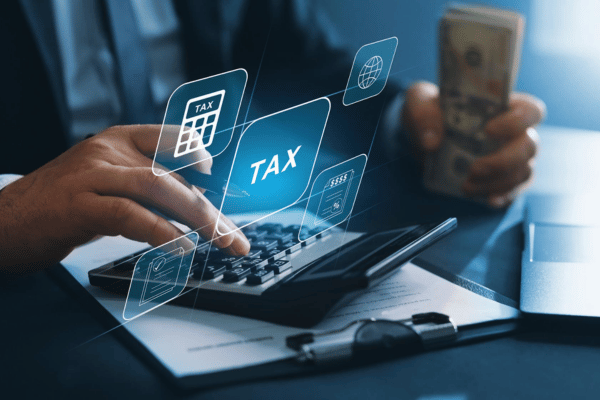New York R&D Tax Credit: Eligibility, Benefits, and Claiming

Research and development tax credits are a powerful tax incentive designed to stimulate innovation and economic growth by supporting businesses that engage in innovation and research within their respective industries.
For businesses in New York, this tax credit can significantly offload the costs associated with developing new products and technologies that give them a competitive edge in their respective markets. This article will look into the specifics of claiming the complicated New York research and development tax credit, eligibility criteria, and qualified research expenses for you to claim.
What are the New York R&D Tax Credits?

The R&D credit in New York aims to encourage businesses to increase their research and development spending within the state. The primary purpose of this credit is to drive innovation and overall economic growth.
One of the top initiatives is the Excelsior Jobs Program, which provides various tax credits to businesses contributing to New York. This program is designed to support companies that create jobs and make substantial investments that boost New York’s economy.
Some benefits a business can see from this program are increased cash flow, competitive advantages in the area, and more spending due to substantial economic growth. You can claim this tax credit in New York for up to 10 years, which is supposed to support sustained investment in your research.
This state tax credit closely mirrors the federal credit, but it means that the requirements will be much stricter than they are in other states. Ensuring you have a certified public accountant will help guide you through the complicated process of claiming tax credits in New York.
Does New York have an R&D credit?
Yes! The two most popular tax credit programs for research and development are the Excelsior Jobs Program and the Life Sciences Research and Development tax credit.
Depending on the field you’re interested in researching, these can provide significant support for qualified research expenses you can accrue when performing experiments.
Tax credits under the Excelsior Jobs Program include the Excelsior Jobs tax credit, the Excelsior Investment tax credit, and many others that can be considerable assistants to any New York business.
What is the Life Sciences R&D Tax Credit Program?
The Life Sciences Research and Development tax credit is designed to support innovation from life science companies throughout the state. To qualify for this credit, you must be a new business qualified as a life sciences company and meet the other requirements to claim tax credits in New York.
The credit is calculated based on the company’s qualified research expenditures, with 15% allocated for companies with ten or more employees and 20% allocated for companies with less than ten employees.
There is an annual cap of $500,000 annually, with a lifetime cap of $1.5 million per company. A $10 million limit is spread across three consecutive tax years, beginning all businesses in New York.
Eligibility Criteria for New York Businesses

In order to qualify for tax credits in the state of New York, you must meet some basic criteria, including engaging in qualified research activities, operating and incurring research expenses within the state, and meeting the specific employment and investment thresholds set by the programs individually.
Because the program implements the employment and investment criteria rather than the state of New York, this can vary depending on which tax credit you’re applying for.
Four-Part Test for Qualifying Activities
The four-part test, derived from Section 41 of the Internal Revenue Code, determines whether a business qualifies for state and federal research and development tax credits.
Technological In Nature
This requirement forced companies to rely on the principles of physical or biological sciences, engineering, or computer science to qualify for a research and development tax credit program. This would mean that they had to work within those fields directly rather than using them to streamline business.
An example of a qualifying activity would be the difference between testing new products and materials for emerging biotechnology. An example of what wouldn’t qualify is customer reactions to the company’s new products and services.
Permitted Purpose
Research covered by the tax credit must be for a permitted purpose. This means that the research must aim to create new and improved functionality for the development or improvement of a product or process.
It is extremely important to keep documents of your research to ensure that everything you claim under this tax credit has justification for its permitted purpose.
Eliminate Uncertainty
This criterion ensures that companies using the tax credit for research and development are specifically using the funds to develop or improve a product or process that can be applied to the field rather than just the business itself.
For example, these tax credits can be used to apply new materials and improve the process of collecting samples from endangered animals, but they cannot be used in product launches or customer service experiences.
Experimentation
The process must involve a trial-and-error methodology, which means there has to be an element of risk with your experiment. While failure never feels good, testing out new materials carries the condition that some of these materials may not work for their intended purpose, and the same can indeed be assumed of other experiments.
Keep track of the different trial runs and methods you use to improve your field to prove that you meet this requirement.
Calculating the New York R&D Tax Credit

New York Research and Development is calculated as 50% of the federal research tax credit related to expenses within the state. It is capped at 6% of the overall qualified research expenses, with an exemption for qualified green projects raising the cap to 8%.
There are a few limits to this credit, notably that you may not claim contract research expenses that you can claim in other states and need a certification from Empire State Development.
Selling & Carryforwarding the New York R&D Tax Credit
In New York, businesses have the option to sell or carry forward their unused R&D tax credits, which allows them the financial flexibility to support their research goals. Eligible companies can sell their credits, obtaining immediate capital to sustain research activities for longer.
This strategy benefits businesses with fluctuating income, as they can still benefit from the credits over time. To maximize these benefits, companies should plan their tax credit usage, maintain detailed documentation, and consider working with experienced consultants such as CPAs, allowing you to find the most strategic for your company.
New York Qualifying Research Expenditures
Qualifying expenses are the costs incurred by businesses in the pursuit of research and development under IRC Section 41. In New York, these expenses must meet specific criteria to be eligible for tax credits under state programs.
Wages
One of the qualified expenditures is wages, which are paid to employees who are directly involved in qualified research activities eligible for the R&D credit. This includes direct research activities, research supervision, and support activities. Importantly, contracted wages do NOT count in New York as wages under this credit, specifically for qualified life sciences companies.
Supplies
Expidents on supplies used in the process are considered qualified. These supplies must be tangible property used during the research process. They can include materials and components, prototypes, and equipment rentals. They don’t include materials that keep the office running, such as office supplies or administrative software.
Research
Direct research costs can come from conducting research activities. This is heavily dependent on the program that you’re applying for. Still, generally, they are used to offset the cost of internal research costs and testing, as well as research facilities.
These facilities and costs must be dedicated solely to research, so you cannot claim the credit against your place of business or other business expenses. An automotive company deciding to maintain a specific testing facility for developing new, safer vehicle technologies is a great example of this.
How to Claim New York R&D Tax Credits?

Claiming these tax credits in New York can be a very complex process that requires planning, documentation, and a thorough understanding of state regulations.
However, with the guidance of a certified public accountant, this process can be made much more bearable, ensuring that you remain compliant and maximize your potential tax savings.
Once your application is submitted to the Empire State Development regional office, it will be approved. After this review, assuming you have gathered your documents and recorded everything correctly, you will be granted the certificate to continue claiming Tax Credits in the state of New York.
After being granted a ceryou’retification, businesses must fulfill performance reporting requirements in the years following the initial claim. You’ll provide reports to the Empire State Development office detailing the continued research activities and any changes in the scope and scale of these activities.
Required documentation and attachments
When you’re ready, complete the paperwork and include all necessary documentation with your certificate of credit attached. This ensures that you can proceed to fill out:
- Form CT-648: This is a form by the Department of Taxation and Finance that allows you to calculate the estimated amount for the credit and any relevant partnership information.
- Form IT-648: Also by the Department of Taxation and Finance, this includes Schedule A to D with important information surrounding ownership and other important computation information.
- Federal Form 6765: This is a federal form for increasing research activities and can be used to elect and figure out the payroll tax credit on the federal level.
- Program Application: Depending on the field in which you want to claim a tax credit, you must complete a separate application. The Life Sciences tax credit application is an excellent example of this.
Next Steps
The research and development credit for businesses in New York offers significant financial change and provides an opportunity for innovation and competitive advantage over other business competitors.
These credits, while supportive, are also very complicated. Suppose you’re tired of the complexities of this application process. In that case, our certified public accountants are here to help you get the most out of your tax credits while staying in compliance.
Their expertise in research and development tax credits can ensure that your business meets all eligibility requirements, accurately calculates qualifying expenses, and more. Don’t let the Complexity of the process keep you from saving money—contact us today for experts in taxation!
FAQs
What is the R&D exemption in NY?
Research and development tax credits in New York allow businesses to claim a tax credit against their overall liability for research expenses incurred within the state.
What is the New York City investment tax credit?
The New York City Investment Tax Credit provides tax relief to businesses that invest in specific properties, such as buildings, machinery, and equipment, used for manufacturing, research, and development in New York. Eligible businesses can claim a percentage of the cost of these investments as a credit against their business taxes.
What is the New York New Markets tax credit?
The New York Markets Tax Credit is designed to attract private investment to low-income communities by providing credits to investors who assist in Community Development Entities. These entities finance businesses and real estate projects that create jobs and stimulate economic growth in areas where opportunity may be less prevalent. This program helps to revitalize economically distressed areas by fostering business development in the regions that need it most.
Can I claim both the New York and federal R&D tax credits?
Yes! Businesses can claim state and federal tax credits for research and development under Section 41 of the Internal Revenue Code. The state criteria closely align with federal requirements, so gathering information will be similar for both.